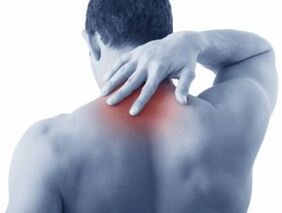
Osteochondrosis - dystrophic changes in articulated cartilage and bone tissues, they are increasingly found.
Separate nosehondrose symptoms can occur in 18 years.This is explained by a seated style.
The disease may affect any area of the spine, 52 varieties of osteochondrose are different.
The first place belongs to the lumbosataral, second place in terms of frequency seems to belong to cervical osteochondrose (osteochondrosis of cervical vertebrae).
Cervical osteochondrosis - Characteristics, development phases
There are 4 phases of cervical osteochondrose, which have their characteristics and symptoms.
- In the first phaseThe cartilage is affected.A person suffering from osteochondrose 1. The degree feels discomfort, muscle tension, but nothing more.The symptoms at this stage are insignificant and do not cause the patient to see a doctor.
- Second phaseOsteochondrosis is characterized by the early destruction of fibrous rings, reducing lumens between vertebral, while it is possible to kill vertebrae and appearance of unpleasant sensations.The corpse of the second degree is most often.
- Third phaseThe disease is characterized by further destruction of the intervertebral disk, the deformation of the orthebral bodies, the formation of bone processes, the phenomenon of the Killa (the fiber ring) is possible.
- In the fourth phaseOsteochondrosis is painful for moving, vertebrates are destroyed and strongly deformed.
Cervical osteohondrose is complicated by small spine sizes.The junkcital bone of the skull with cervical vertebrates breaks through nerve endings, blood and lymphatic veins.
Features of cervical osteochondrosis.
- The movable cervical region is articulated with a seated thoracic department.This increases the load of the vertebral of the cervical region.
- The vertebrae vertebrae with cervical osteochondrosis occur in the sideline.
- The vertebral artery passing through the side holes of 2-6 cervical vertebrae, is included in the destructive processes.
Symptoms and signs of cervical osteochondorosis.

Frequent events of cervical osteochondrosis are headaches that occur in the back of the head and spread in the Parietal and Time Region.During the worsening of the disease, pain is so serious that it is difficult to turn or tilt your head.
Compression of the vertebrate artery with cervical osteochondrose manifestes with dizziness, shaking flies in front of the eyes.With a sharp turn of your head, you can lose consciousness.The pain is given in their arms and shoulders.
The defeat of the spine is also manifested in violation of coordination, hearing and vision.
When he fastened the nerve in the vertebrae of the cervical region, the pain goes down from the door to the shoulders and through the hands of his fingers.The patient feels tingling, look goosebump, finger stiffness, forearm, brushes.The pain is intensified by morning, gives chests.
Damage to the spinal artery manifests pulsating pain in the head of the arches, hoods, temples.Loss of consciousness, nausea, eyes, eyes, heart ache are possible.
Blood circulation violation can lead to deterioration in memory and reducing intelligence.The pain of pressure in the heart reminds of the symptoms of true angina pectoris.
The causes of the disease are to reduce physical activity with years of physical activity, the occurrence of surplus weight, hypothermia, injuries of state-borne or acquired, injuries.
The disease can also affect people involved in severe physical work and office workers.



































